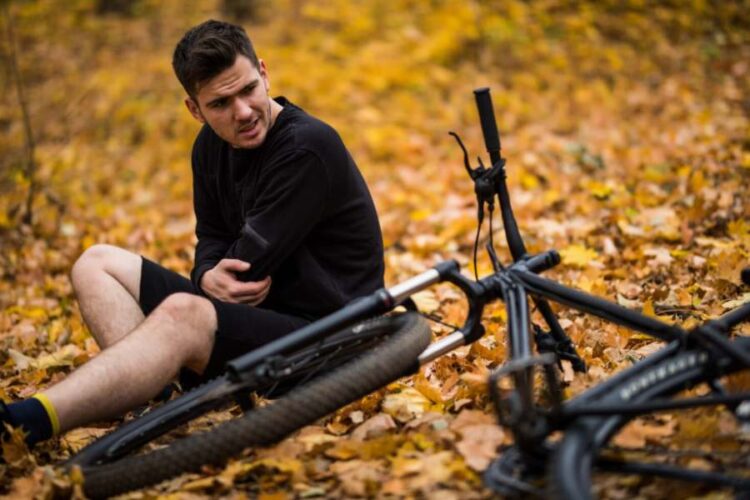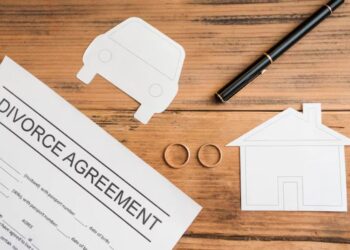In the shaken, adrenaline-filled moments after a bicycle accident, the truth can feel like the first casualty. You’re absolutely certain you had the right of way, while the other party is just as convinced they did.
It’s a chaotic and emotionally charged situation where memory is fallible. And the gap between “what happened” and “what we believe happened” can feel immense. From a legal perspective, this initial disagreement is the rule, not the exception.
That’s why objective evidence becomes your most crucial ally. Figuring out liability is all about reconstruction. The process involves examining the facts to see if someone dropped the ball on their duty to be careful.
So, what happens when a driver and a cyclist just can’t see eye-to-eye? Read on to understand how these messy disagreements actually get settled.
How Liability Is Established
After a bicycle crash, liability depends on whether a person acted reasonably or violated a traffic rule. Facts, not personal experiences, are used to sequence each activity before contact in the traffic collision inquiry.
To determine who was responsible, here are crucial elements investigators focus on:
Applicable road rules for both drivers and cyclists
Traffic laws are like the rules for safely sharing the road. For cyclists, this means using bike lanes correctly and signaling clearly before a turn. To be a good driver, you need to know when to give way and respect bike lanes.
It becomes powerful evidence that someone is at fault when they break these rules. For example, a car might drive into a designated bike lane, or a bike might swerve into traffic. These actions make it quite evident somebody did something wrong just before the crash.
Right-of-way situations at intersections, stop signs, and crosswalks
Intersections are hotspots for bicycle crashes. So, who goes first? The law is clear on right-of-way, but it requires everyone to be predictable and alert.
An investigator will ask: Did the driver come to a complete stop or just roll through? Did the cyclist signal their intention? The responsibility falls on whoever failed to yield when the law required it.
Visibility and the ability to avoid the crash
Could you actually see the danger in time to stop? That’s the central question here. Factors like a dark roadway, glare from the sun, or a car parked in a bike lane all dramatically cut into your reaction time. The law also looks at whether you did your part to be seen.
Were you using a bright headlight at night? Wearing reflective clothing at dusk? If the answer is no, it can significantly impact who is found at fault for a crash that might have otherwise been avoided.
When the evidence feels confusing or stacked against you, you don’t have to figure it out alone. Consulting with a personal injury law firm in Tuscaloosa or another attorney who specializes in bicycle cases can make all the difference. They know the law. They show you exactly what proof will best support your story.
Evidence That Helps Prove What Happened
When stories about the bicycle crash conflict, your word alone is rarely enough. You need proof. This is where evidence becomes your most powerful ally.
Pay attention to these important pieces of data to build a strong case:
Photos or videos of the scene, injuries, and vehicle or bicycle damage
The picture on your phone is the first thing you can use. In urban areas, where things are more complicated, you need to get the whole picture. Take long shots of the whole area. Take close-ups of the exact spot in the bike lane where the accident happened. Don’t forget to take pictures of the damage to your bike from all sides and any injuries you can see. This visible proof is crucial. Document the early signs of head and brain injuries, which might not be obvious at first.
Witness statements gathered before memories fade
Don’t let the truth drive away. In the immediate aftermath, independent witnesses are your best chance for an objective account. A bystander might have seen critical details you missed, like a car failing to yield or a cyclist using a correct hand signal.
Get their contact information immediately. Memories change quickly. A statement gathered on the spot preserves a clear and critical snapshot of what actually happened.
Police reports and official documentation
A police report is an official summary that can make or break your case. The officer who responds writes down what they saw, may give tickets for traffic offenses, and makes a neutral record of the scene.
But these reports can be hard to understand. A lawyer who specializes in bicycle accidents knows how to read this document, find any mistakes, and use it to get other important evidence.
These types of evidence build a strong, objective case. They help clarify what really happened.
What to Do if You Cannot Reach an Agreement
It’s easy to feel helpless when you’re in a “he said, she said” corner. But you don’t have to stay there. Use a structured method to take charge. The first thing you should do is stop and carefully go over everything.
Pay close attention to any new information that comes up. Maybe a witness has come forward, or you’ve seen something important in the pictures that you hadn’t seen before. Objectively ask yourself: Does this new evidence solidify my account of the crash?
Once you’ve reviewed your personal evidence, look at the bigger picture. You can get a better grasp on things if you look at bicycle accidents in a bigger picture. Public data from traffic safety agencies shows what causes most accidents.
For instance, you can see how often right-of-way violations at intersections lead to collisions. Recognizing these patterns is powerful. In it, you can see how accident investigators work and which specific details decide the end result.
Final Thoughts
A bicycle collision impacts more than your bike or body. The dispute over fault can feel like a second injury, creating real pressure on your recovery and peace of mind. But resolution comes down to who has the clearest evidence. To move forward, you’ll need to be patient, gather solid documentation, and be smart enough to get professional help.










